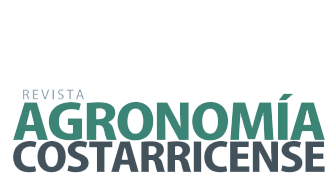Geochemical aspects of cadmium availability in soils: current knowledge and research outlook in Costa Rica
DOI:
https://doi.org/10.15517/qngffe11Keywords:
heavy metals, environmental quality, soil pollution, fluvial sediments, environmental geochemistryAbstract
Introduction. Cadmium (Cd) is a heavy metal that poses a risk to environmental quality and human health. Its mobility and availability in soils depend on geochemical processes, whose understanding is essential to develop management practices that mitigate its toxic effects. Objective. To review the geochemical processes controlling Cd availability in soils, to provide an overview of the current knowledge in Costa Rica, and to identify research challenges at the national level. Methodology. A review of scientific literature was conducted to address these objectives, and to identify the most common management practices aimed at reducing Cd toxicity in soils. Analysis. Cd in soils originates from geogenic or anthropogenic sources. It naturally occurs mainly as Cd²⁺, whose mobility, bioavailability, and accumulation in crops are controlled by geochemical processes such as adsorption to mineral and organic colloids, precipitation–dissolution, and formation of soluble complexes. These processes are influenced by soil properties, particularly pH, redox potential, and organic matter content. Cd solubility increases markedly at soil pH values below ~5.5. In Costa Rica, total Cd content in soils ranges from < 0.01 to 6.98 mg kg-1, with an average of 0.96 mg kg-1. Lower concentrations are reported in fluvial sediments (average 0.13 mg kg-1). Detailed information on geochemically reactive and bioavailable Cd fractions in Costa Rican soils is still lacking. The most studied management practices to reduce Cd availability include the application of liming and organic amendments, and fertilization with micronutrients such as Zn. Conclusions. Validation of analytical methodologies for characterizing reactive Cd fractions and its speciation in soils is needed. This is essential for accurate assessments of environmental risk and the development of mitigation strategies to reduce the adverse effects of Cd on crops and human health.
Downloads
Downloads
Published
Issue
Section
License
Copyright (c) 2025 Agronomía Costarricense

This work is licensed under a Creative Commons Attribution-NonCommercial-NoDerivatives 4.0 International License.
The author (s) must authorize Revista Agronomia Costarricense Journal the right of its publication which will be registered with the Creative Commons Attribution-NonCommercial-NoDerivs 4.0 license. Author (s) may include their publication in an institutional repository clarifying that the publication was done in the Agronomía Costarricense Journal.
Once the volume of the respective period has been published, the digital version can be accessed, which allows managing a self-archive of the document or documents of interest, in the site selected by the author.
Otherwise, the main author must attest in writing, that the presented information is original and unpublished by any other media. Also, must have the authorization of the institution where the investigation was conducted.



